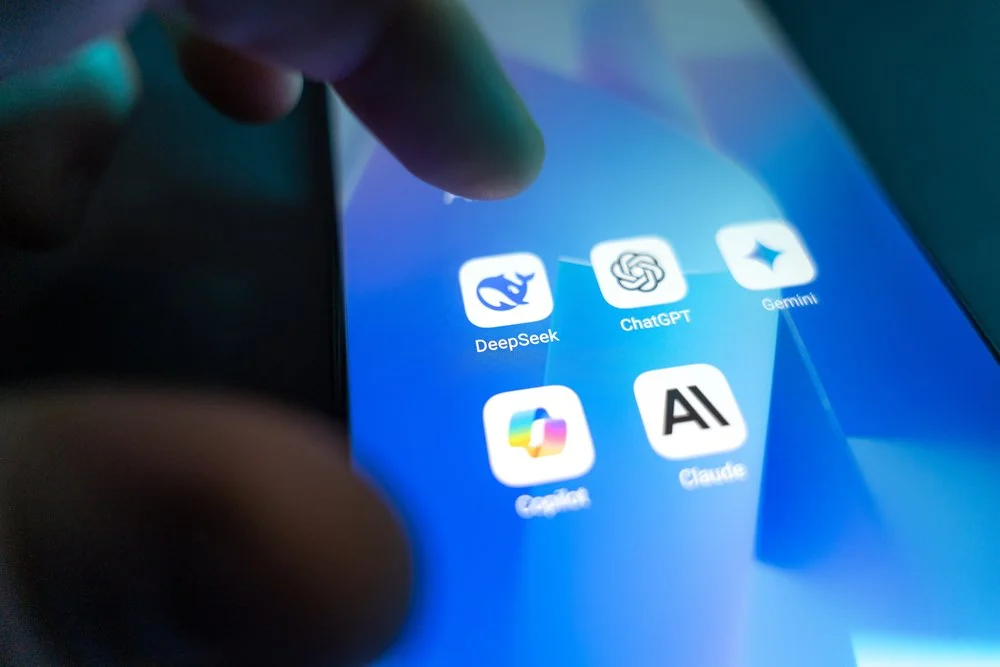7 Best Practices to Successfully Write a Grant Proposal for a New Nonprofit Website
Tell me if this scenario sounds even vaguely familiar to you.
You just found out about a grant opportunity that could fund a project you've had on your radar for months - a new (functioning) website! But, unfortunately, the grant proposal is due in just two days, you still need to start writing it, and you have no budget for a professional grant writer.
Somewhere between overwhelmed and stressed, you're tempted to copy and paste from an old grant proposal, changing a few things here and there but assuming that good enough might get the job done.
You're worried about making mistakes or failing to fully communicate the project's impact. Still, the deadline is quickly approaching, and the to-do list of a nonprofit director (or grant writer) is anything but short.
I wish this weren't a scenario that's playing out all over the nonprofit world, but I fear I'd be wrong if I said otherwise. Grant writing is riddled with challenges – from finding the proper grants to apply for to allocating the necessary resources for time to write, and effectively communicating how the project will impact your day-to-day abilities to fulfill your mission.
(I'm probably missing some challenges, but it's been a few years since I served as a United Way Executive Director in charge of allocating funds to local nonprofits.)
A successful grant proposal is compelling and tells a story, yet sadly, funders constantly receive generic, template grant applications that lack both. Stressed-out nonprofit leaders feel the need to promise the world in a grant application just to get funding and yet lack the resources in planning and writing to make their case effectively.
After being asked too many times to count about how a nonprofit might secure grant funding for a new website, I decided to write it out. The following post is a result of my years as a fundraiser, grant writer, and funder and offers seven best practices for writing a successful grant proposal requesting funding for a new website.
While every grant application is unique (be sure to read the "general tips" section below), following these best practices will take you far.
The alternative, of course, is to send it on a wing and a prayer and hope the grant-funding gods are smiling on you today. Your choice! :)
TL;DR Section
At the risk of you skipping through this entire post, here's the TL;DR section for any nonprofit organization that needs to write a grant proposal seeking a funding source for a new nonprofit website. Using my perspective as a former fundraiser, grant writer, and funder via United Way, I've curated my best seven tips for writing an effective grant proposal.
Make a strong, data-driven case for why you need a new website, describing what your current site lacks, how it's underperforming, and what your organization cannot accomplish without a new website.
Demonstrate how your website will increase your organization's capacity to reach your target audience.
Write an impact outcome statement detailing what will change for your organization as a direct result of a new website.
Dedicate a section of your proposal to explaining how a new website (and its analytical data) will inform your marketing strategy.
Provide detail on gained efficiencies. State how will the new website help increase responsiveness, eliminate errors, and boost capacity
Address inclusivity and accessibility standards and requirements.
Quantify Your Impact: Share your methods to measure the success of your project.
Now, let's dive into each of these best practices for more specifics, including example text you can steal, copy and edit for your grant application.
7 Best Practices For Writing a Grant For a New Website
1- Make a strong, data-driven case for why you need a new website
In short, if you're hoping to fund your new website project with grant money, you'll need to describe what your current website lacks, why it's underperforming, and the limitations of your nonprofit that you can directly attribute to a poor website. Let's dive a little deeper into each one of these.
1a - Describe what your current website lacks.
Simply stating that you need a new website isn't all that convincing, especially if the timetable since your last website investment has been short. (However, there is no formula for how often an organization should invest in a new website.) The key in this section of your grant application is to be specific and to include examples. For example, if you cannot make structural changes to your website navigation because the platform is "locked down," this can be a significant issue. Websites with poor navigation structures make it more difficult for users to find what they need. And, as you might guess, if they can't find what they need, they'll leave and never stick around long enough to be inspired to make a gift.
Your current website may lack a user-friendly interface for editing, limiting who on your team has the knowledge or resources to make edits, resulting in less frequent updates. Perhaps it's an outdated platform that doesn't allow you to activate required accessibility controls or any other issues. Be specific about what you lack and how that issue impacts your ability to use the website as intended - to gain volunteers, advocates, and donors.
1b - Detail how your website is underperforming
Many grant writers make many promises in grant applications, listing exactly how they'll measure results and demonstrate outcomes. However, only a few writers make the case, with data, about the current solution and how it's holding them back. Back up the previous section on what your website lacks with data. Using website analytics from either the website platform itself (for a product like Squarespace or Wix) or Google Analytics, include hard data on how the website is underperforming. Examples include:
An extremely high bounce rate that you're attributing to people not finding what they need
Low traffic numbers resulting in not having enough SEO features to help the website be visible in search engine results
Low or missing conversion data because the platform doesn't offer the right features to track buttons or form conversions
1c - Explain what your nonprofit cannot accomplish because of the current website.
This explanation of limitations, attributed directly to an underperforming or defunct website, is powerful. Potential funders want to see your case for funding in a practical way. There is a significant difference between stating that you'd like a community foundation to pay for your new website because your old one "doesn't work well" versus explaining how your current website's limitation on third-party integrations is causing a significant issue with accepting credit cards online from new donors. Or outlining how you'd like to launch a new board portal to increase board member engagement and make it easier to access board materials online, except your current website platform doesn't have the technology to make that work behind a password-protected page.
These concrete examples demonstrate to the funder that you have thought through your issues, understand how your website connects to your organizational goals, and have a plan to choose a new product that will meet the requirements.
2- Demonstrate how your website will increase your organization's capacity to reach your target audience
A website is a powerful tool that can help your nonprofit reach a wider audience, engage with supporters, and increase your impact in the community. Inside your grant application, it's your job to demonstrate to the grant funder exactly how your capacity will increase with a new website.
For example, with a well-designed and user-friendly website, you can reach potential donors, volunteers, and community members who may have yet to be aware of your organization. In addition, your website can serve as a platform to showcase your mission, share success stories, and provide information about your programs and services, resulting in increased visibility that can help you attract new supporters and grow your organization's reach.
Another capacity-building feature of a new website is around functionality.
For example, you can use your website for online giving, to register volunteers, and to extend event invitations with easy-to-use RSVP and payment functions. By providing easy-to-use online forms and interactive features, you can make it easier for supporters to get involved and stay engaged with your organization.
Only your organization can make a case for increased capacity – use this approach to communicate with the potential funder that your organization sees the greater potential for the website, well beyond being an online brochure.
3 - Write an impact outcome statement detailing what will change for your organization as a direct result of a new website
An outcome impact statement is a brief statement that outlines the intended impact or result of the project or program for which you seek funding. It should be a clear and concise statement demonstrating the potential impact of your project and how it aligns with the goals and objectives of the grant funder.
An outcome impact statement should answer the following questions:
What is your project or program's intended outcome or impact?
Who will benefit from the outcome or impact?
How will the outcome or impact be achieved?
What evidence do you have to support your proposed outcome or impact?
Even if the grant application does not explicitly ask for an outcome statement, including one, is a massive advantage.
An example of an outcome impact statement for a new nonprofit website might be:
"Our proposed website will increase our organization's reach and engagement with the community, leading to an estimated 20% increase in donations and volunteer sign-ups within the first year of launch. This increase will allow us to expand our programs and services and better serve the needs of our community."
By including an outcome impact statement in your grant proposal, you can demonstrate the potential impact of your project and how it aligns with the goals and objectives of the grant funder.
It can also help you focus your project goals and ensure that you are measuring and tracking the right outcomes to evaluate your project's success. Overall, an outcome impact statement is a powerful tool to help you make a strong case for why your nonprofit website project deserves funding and how it will make a meaningful impact in the community.
4- Dedicate a section of your proposal to explaining how a new website (and its analytical data) will inform your marketing strategy
Dedicating a section of your grant proposal to explaining how a new website (and its analytical data) will inform your marketing strategy is another best practice for writing a successful grant proposal. Analytics can help you understand how your website performs, who visits it, and how they interact with your content. This data can help you make informed decisions about allocating your marketing dollars more wisely and getting the most out of your website.
Communicating that aspect of a new website sends a strong message to the potential funder that you understand how a website is just a piece of your marketing puzzle - that it's not a single project for which funds are spent and forgotten. Instead, the funder's investment in your organization provides a long-term return on investment.
Here's an example to review as you write your own grant proposal:
For instance, if our website analytics show that a particular page or content type generates more traffic and engagement, we'll prioritize promoting that content in our marketing efforts. Conversely, if a certain page or content type is not performing as well, we can adjust or optimize it to improve its performance.
Website analytics can also help us understand our target audience and how they find and engage with our organization. We can use this information to inform our marketing strategies and target specific audiences with tailored messaging and content. This targeting can lead to more effective marketing campaigns that resonate with our audience and drive engagement and support.
5 - Provide detail on gained efficiencies. State how will the new website help increase responsiveness, eliminate errors, and boost capacity
An adequately designed nonprofit website can eliminate human errors and increase efficiency in several ways. For example, by using automated tasks and forms, a website can help reduce manual data entry and improve accuracy. This automation can save time and reduce the risk of errors that can lead to miscommunications, lost donations, or other negative consequences.
Let's look at an example of this – a volunteer registration form. With this form, volunteers can easily sign up for shifts or events, and their information is automatically added to a database or calendar. This eliminates the need for manual data entry, reduces the risk of errors, and streamlines the volunteer management process. Similarly, an integrated donation form can help ensure that donor information is captured accurately and securely and can eliminate the need for manual data entry of donations.
Providing concrete examples for your organization in your grant application is critical. Explain that by using automated tasks and forms, the new website will free up staff time and resources, allowing you to focus on other important areas such as programming and outreach.
6 - Address inclusivity and accessibility
Including the topic of inclusivity and accessibility in your grant proposal shows funders that you are aware of the importance of accessibility and have a plan to ensure that your website is inclusive and accessible to all. (Side note here, if you don’t have an accessibility statement for your website, you can snag a template over in the Nonprofit Template Library.)
Start by outlining your organization's commitment to accessibility and its impact on your website design process. This outline can include information on how you have consulted with experts in the field of accessibility and how you have incorporated their recommendations into your website design. Additionally, you can describe any features or tools you plan to have your website designer implement to make your website more accessible, such as alternative text for images, captions for videos, and larger font sizes for easier reading.
It's also important to highlight the benefits of an accessible website and how it aligns with the grant program's goals. These benefits can include how an accessible website can increase your organization's reach, engagement, and impact and ensure that everyone has access to your organization's resources and services.
By demonstrating how an accessible website aligns with the grant program's goals, you can show funders that your project is essential, relevant, and aligned with their priorities.
7- Quantify Your Impact: Share your methods to measure the success of your project.
By having access to website analytics, nonprofits can gather data to demonstrate the project's return on investment, track key performance indicators, and identify areas for improvement. Some grant-funded initiatives are much harder to measure, so ensure you take advantage of this section by impressing the potential funder on the plethora of data you'll have available for measurement.
One potential method to measure success is to track conversion rates, such as donation or volunteer sign-up rates. By setting up conversion tracking within your website analytics, you can monitor the number of conversions and identify which pages or campaigns drive the most conversions. This data can help you optimize your website and marketing strategies to maximize conversions and increase engagement with your organization.
This data would be excellent to share with a grant funder, showing "before data" with your current website and "after data" with the new website.
Another method to measure the success of a new nonprofit website is to gather feedback from stakeholders. This feedback can include conducting surveys, focus groups, or one-on-one interviews with website users, donors, volunteers, and staff members. By gathering qualitative feedback, you can gain a deeper understanding of how your website is meeting the needs of your audience and how you can improve it.
For example, you can survey website users about their experience navigating the website, finding information, and completing tasks such as donating or signing up to volunteer. You can also ask staff members and volunteers about their experience using the website and how it has impacted their work. By analyzing this feedback, you can identify common themes, areas for improvement, success stories, and best practices.
By gathering feedback from stakeholders, you can also demonstrate to funders and supporters that your nonprofit is responsive to the needs of its community and committed to continuous improvement. Nonprofit professionals can use this qualitative data to complement the quantitative data gathered through website analytics, providing a more holistic view of the impact of your website on your organization and its stakeholders.
Reminder: General Grant Writing Tips To Follow
I would be remiss if I neglected to mention some reminders for basic grant writing tips to help you write that winning grant proposal.
Above all, pay attention to your prospect research. Long before the grant writing process begins, grant seeking starts with identifying the right grant funders. Your community likely includes a community foundation, a United Way, and perhaps a local private foundation or two. Each of these funders will have their own unique agenda for funding, areas they love to fund and those they are reluctant to support. Some may restrict nonprofits from seeking operational funds (a practice I hope is beginning to fade), while others may specialize in health, education, or arts.
Starting with the right grantmaker is vital. Even an experienced grant writer can only secure the funding if the grant ask and the grant funder is a good match. Tools like Foundation Center (now called Candid) or Grant Watch can be a big help here but don't overlook the power of asking fellow nonprofits and local business leaders for suggestions, too.
Understand the Grant Application Process
Every grant application process is different. Understanding the requirements and process of the grant you are applying for is crucial. Pay attention to the application deadline, submission format, and any other specific instructions the grantor provides. Failing to follow specific instructions can significantly decrease your chances of being awarded the grant (even if you follow all of the fantastic tips I listed above!)
Edit and Proofread
A poorly written proposal can make it difficult for reviewers to understand your project goals and objectives and reflect poorly on your organization. Therefore, it's essential to have multiple people review and edit your proposal to ensure it is clear, concise, and error-free. This advice is applicable even if you've used grant writing services from a professional agency, by the way.
Pro-Tip: Using a proofreading tool like Grammarly is a wise investment for grant writers or nonprofit organizations that spend a lot of time writing professionally. This software uses advanced algorithms to analyze your writing, catching common errors such as spelling, grammar, and punctuation.
Beyond catching errors, Grammarly can also help improve the clarity and effectiveness of your writing. The software offers suggestions for rewording sentences, enhancing tone and style, and eliminating unnecessary words or phrases. These suggestions help your proposal stand out and communicate your organization's goals and objectives clearly and compellingly.
Plus, you can also apply the skills you learn through using Grammarly to other writing.
Address why you cannot fund the project from your own funding resources.
Every grant funder wants to see an organization that's resourceful and never dependent on one income stream (especially grant-funded streams). Regardless of the project you're applying for, be explicit about how you're working to fund current and future projects.
For example, as you're writing grants, mention how you're diversifying your income through fundraising (annual appeals and major gift funding), grant writing, corporate sponsorships, capitalizing on in-kind gifts, client service or program fees, etc.)
And use a simple but straightforward income and expense budget to illustrate the portion of the project you are willing to fund on your own. This section can also explain your organization's financial stability and a statement of ability to sustain the website in the long run.
Final Thoughts on Writing A Great Grant Proposal
There's good news and bad news here.
The bad news is that no grant writing template or course can prepare you 100% to write (and win) a grant for your new website project. Every piece of advice (including this one) assumes that your organization has done grant research, has the capacity to put your ideas and plans into writing, and that your proposal lands in the hand of a funder who is moved by your story and cause.
The good news is that when you use the seven best practices I've outlined above, you're almost guaranteed to stand out among the competition - for all the right reasons. Your next winning nonprofit grant proposal is achievable, and securing grant funding for a new website is an admirable goal. When presented effectively, it's an attractive project for funders and likely to garner support from those who see the long-term value of making your digital front door as welcoming, accessible, and compelling as possible.
You might find these related posts helpful…






